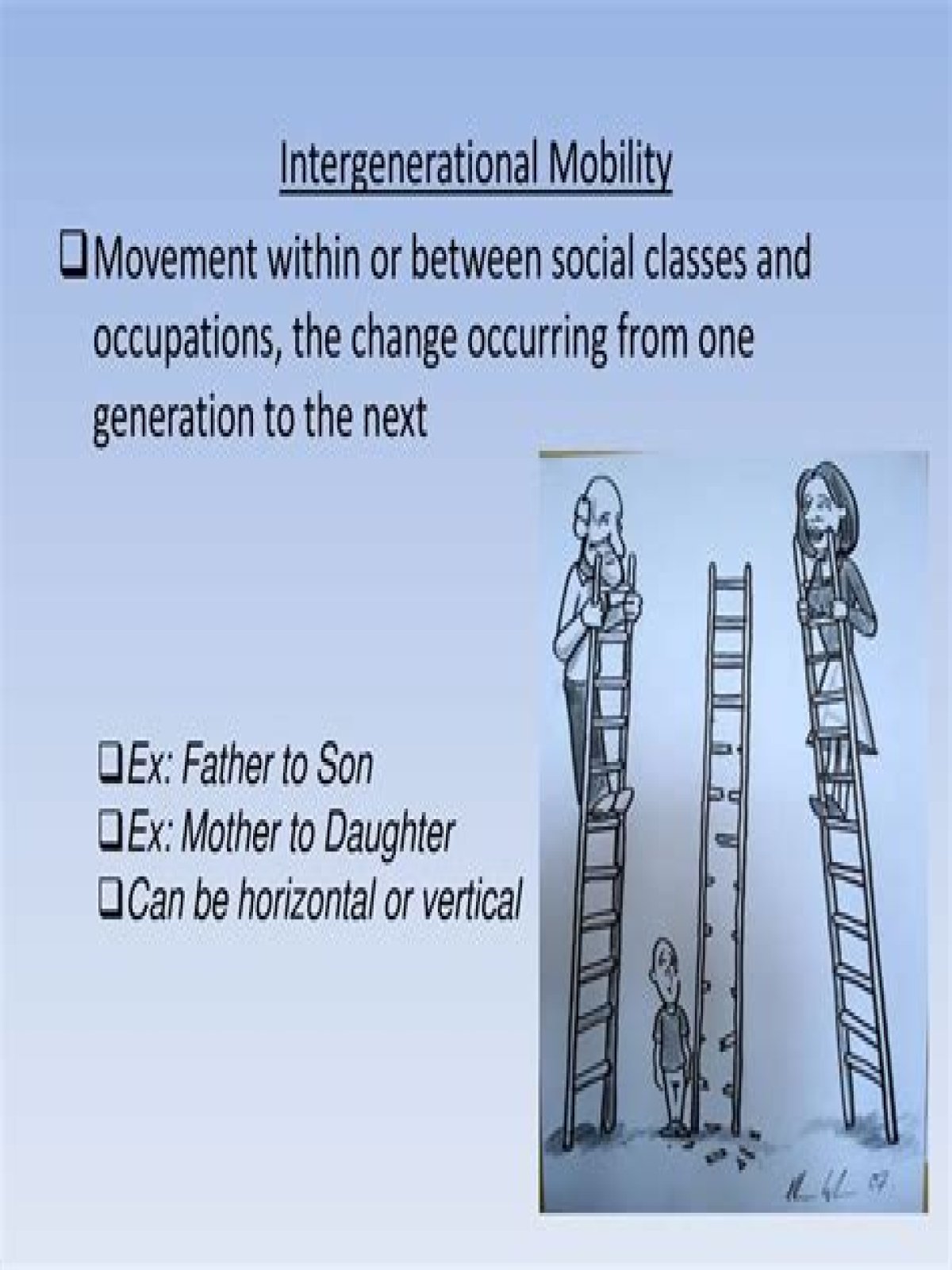What is inter generational mobility?
Intergenerational mobility is the change of the position of a person or a household as compared with previous generations, while intra-generational mobility is the change of the position of a person or a household over time. Social mobility can be considered and measured in terms of education, employment and income.
What are the key elements of intergenerational mobility?
Intergenerational mobility for any one individual is determined primarily by two factors: (1) the amount of opportunity in society, and (2) the rate of economic growth and associated change in the occupational structure. These two components of mobility are discussed in additional detail below.
Why is intergenerational mobility important?
Intergenerational mobility is important for both fairness and economic efficiency in a society. This column uses data from a new global study spanning five decades to show that average relative mobility is lower in developing economies, with no sign that the gap with developed countries is getting smaller.
What are the 5 types of mobility?
Types of Social Mobility
- Horizontal mobility. This occurs when a person changes their occupation but their overall social standing remains unchanged.
- Vertical mobility.
- Upward mobility.
- Downward mobility.
- Inter-generational mobility.
- Intra-generational mobility.
How does intergenerational mobility differ from intergenerational mobility?
Lesson Summary Intragenerational mobility refers to a person’s social movements throughout his or her lifespan. This is in contrast to intergenerational mobility, which refers to social movement across different generations.
How is intergenerational mobility different from Intragenerational mobility?
Intergenerational mobility is the change in position of a person or a household as compared with previous generations, while intragenerational mobility is the change in position of a person or a household over time.
Which of the following is an example of intergenerational mobility?
An example of intergenerational mobility is when the son of a construction worker graduates from law school and becomes a successful lawyer.
How is intergenerational mobility measured?
The most widely used measure of intergenerational economic mobility is intergenerational income elasticity (IGE), a coefficient obtained via a regression model that captures the statistical connection between parents’ income and their children’s income in later life.
What is intergenerational mobility explain it with an example from your own family society?
Intergenerational mobility refers to any change in the status of family members between generations. In the example above, we saw Millie reach a higher social status than her parents. Millie’s children then reached a higher social status than both Millie and her parents.
What is the meaning of occupational mobility?
Occupational mobility refers to changes in individual occupational status. Occupational mobility is usually measured by changes in International Standard Classification of Occupations (ISCO) categories. Therefore, job changes that result in a promotion could be considered a proxy for occupational mobility.
What are the three types of social mobility?
Types of Social Mobility. Social mobility can be vertical and horizontal, absolute and relative, and between generations.
How do sociologists define intergenerational mobility quizlet?
How do sociologists define intergenerational mobility? It is movement up or down a social class over two or more generations.
